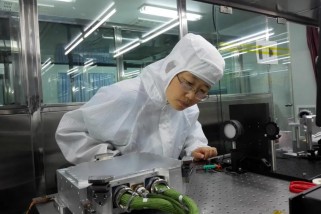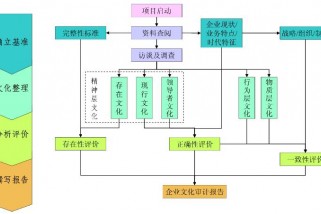美国国防部与General Atomics航空系统部签署了一份价值3980万美元的订单,进一步研发大功率激光武器;其最终目标是希望将该系统集成到其战术飞机的设计中。
高能液态激光领域防御系统(HELLADS)项目在美国国防部高级研究计划局(DARPA)的资助下,工作已经开展了几年;现在该项目眼看已经接近目标值150KW的输出量。
根据DARPA财政年2012预算文件来看,150KW的示范工程项目已经于去年完成;其中有两个单元模块设计的输出功率超过了34KW。基于这些单元结果,下一个关键步骤就是生产更多的激光器模块并将达到150KW的目标输出量。
在最近的合约中,General Atomics航空系统部将完成该150KW的目标设计;还包括主要在其美国加州总部的电池和热管理系统的设计。在美国国防部(DoD)一则简要通报中指出,该项目中的一些重要工作还将在图森、亚利桑那州、阿尔布开克以及美国新墨西哥州的总部进行。
HELLADS系统最关键的一个要求是极大的减少典型高能激光武器的重量;最终目标是使得150KW系统的重量不超过750千克。与现有的化学激光器系统相比,HELLADS系统将会是一个数量级的变更;现有的化学激光器系统效率虽然很高,但是其笨重的体积对于任何移动部署来说都是很艰难的。

达信公司的100KW设计项目
在2008年后期,DARPA也与达信公司防御系统部签署了一份价值2100万美元的合约,为HELLADS研发单元模块---这个设计项目是否也将被纳入150KW能量项目中尚未透露。达信公司此次的设计项目是基于其新型ThinZag陶瓷二极管泵浦固态激光器专利而进行的;该新型ThinZag激光器是一个使用了薄片结构的单孔径激励振荡器系统。
达信公司在去年就指出,他们已经能够在实验室研发出平均功率超过100KW的系统;这也是Joint Technology Office的联合高功率固态激光器(JHPSSL)项目的一部分。
对于合约商来说,由于高效激光器系统释放出的大量热量,使得输出功率在一定量时间内保持一定的数值,是一个主要的挑战。基于JHPSSL项目,诺斯罗普·格鲁曼也与去年12月指出,其100KW激光器已经持续运行了6小时---相信是这种高功率系统在运行中持续最长时间的一个。
随着各种控制和冷却系统融合的要求,HELLADS示范项目将通过测试,来证明其击落地对空导弹和火箭的能力。
HELLADS是经过DARPA的战略技术办公室进行管理的;而前美国空军官员Richard Bagnell则担任该办公室项目经理。
原文如下:
The US Department of Defense has awarded General Atomics’ Aeronautical Systems pision a $39.8 million contract to further develop a high-power laser weapon, with the ultimate goal of integrating the system within tactical aircraft.
The High-Energy Liquid Laser Area Defense Systems (HELLADS) program has been under development through funding from the Pentagon’s Defense Advanced Research Projects Agency (DARPA) for several years, and now appears close to reaching its target output of 150 kW.
According to DARPA’s fiscal year 2012 budget estimate document, the detailed design of a ground-based 150 kW demonstrator was completed last year, while two unit cell module designs have shown an output power exceeding 34 kW. Based on those unit cell results, the next key step is to produce additional laser modules and connect them to deliver the targeted 150 kW output.
Under the latest contract award, General Atomics Aeronautical Systems will aim to complete the 150 kW design, along with battery and thermal management systems, mostly at its Poway, California, headquarters. Significant chunks of the project work will also be completed in Tucson, Arizona and Albuquerque, New Mexico, according to the DoD’s brief announcement.
One of the key requirements of the HELLADS system is to dramatically reduce the weight of typical high-energy laser weapons, and the eventual goal is for the 150 kW system to weigh no more than 750 kg. That would represent an order-of-magnitude reduction compared with existing chemical laser systems that, while effective, are considered too bulky and awkward for any kind of mobile deployment.
In late 2008, DARPA had awarded a contract worth up to $21 million to Textron Defense Systems to design a unit cell module for HELLADS – although it is not clear whether this design will also be selected for power scaling to the 150 kW target. Textron’s design was based upon its proprietary “ThinZag” ceramic diode-pumped solid-state laser, a single-aperture power oscillator system using a thin-disk architecture.
Last year, Textron said that it had demonstrated an average output power in excess of 100 kW in its laboratories, as part of the Joint Technology Office’s Joint High-Power Solid-State Laser (JHPSSL) program.
Because of the intense heat generated by even very efficient laser systems, maintaining the output power for any significant amount of time has been one of the main challenges for the contractors. Also working under the JHPSSL program, Northrop Grumman said last December that its 100 kW laser had operated for six hours - believed to be the longest period of operation yet seen for such a high-power system.
Following integration with the various control and cooling systems required, the ground-based demonstrator version of HELLADS will be tested for its ability to shoot down targets such as surface-to-air missiles and rockets.
HELLADS is managed through DARPA’s Strategic Technology Office, with former US Air Force officer Richard Bagnell acting as program manager.
转载请注明出处。








 相关文章
相关文章
 热门资讯
热门资讯
 精彩导读
精彩导读


































 关注我们
关注我们




